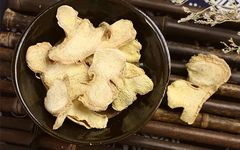Ginger is not only a seasoning but also an important medicinal herb in Traditional Chinese Medicine (TCM). The earliest record of ginger as a medicinal substance is found in the Shennong Bencao Jing, which states that dried ginger (gan jiang) “is used for chest fullness, cough, counterflow of qi, warming the middle, stopping bleeding, inducing sweating, expelling wind-dampness, and treating diarrhea.” Over time, many medicinal preparations have been derived from ginger, each with different effects. This article will introduce how TCM utilizes ginger, following the order of its medicinal use.Dried Ginger (Gan Jiang)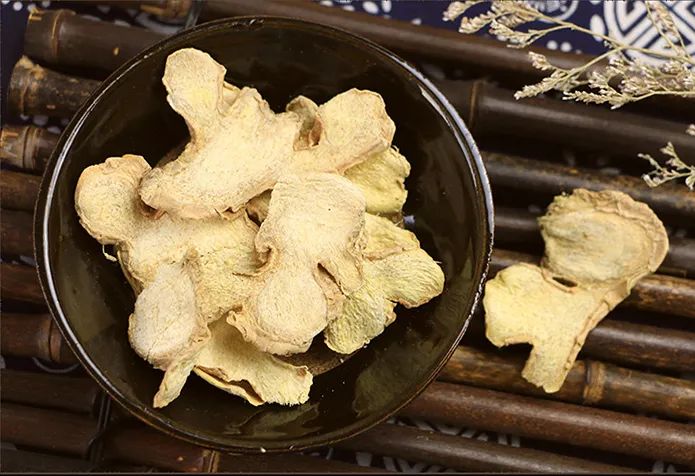 The first is dried ginger, which is first recorded in the Shennong Bencao Jing. The effects of dried ginger include warming the middle, dispersing cold, warming yang, unblocking meridians, and warming the lungs to transform phlegm. It is a warming interior herb commonly used to treat cold pain in the abdomen, cough with cold phlegm, vomiting, diarrhea, and weak pulse with cold limbs.Dried ginger is often used in combination with Aconite (Fu Zi). Examples of formulas include Li Zhong Wan, Fu Zi Li Zhong Wan, Si Ni Tang, Xiao Qing Long Tang, and Zhu Che Wan. Among them, Li Zhong Wan is derived from the Shang Han Lun and contains ginseng (Ren Shen), Bai Zhu (White Atractylodes), roasted licorice (Zhi Gan Cao), and dried ginger. Its effects are to warm the middle and disperse cold, tonifying qi and strengthening the spleen. It is used for abdominal pain and diarrhea caused by spleen and stomach deficiency with cold.The Fu Zi Li Zhong Wan is derived from the Taiping Huimin Heji Ju Fang and includes the hot herb Aconite, enhancing its warming effects. The original text states, “It treats cold weakness of the spleen and stomach, cramping pain in the heart and abdomen, vomiting and diarrhea, cholera, cold body with slight sweating, cold hands and feet, fullness in the chest, rumbling in the abdomen, persistent vomiting, inability to eat, and all cold-related conditions.” In the Ming Dynasty, Zhang Jingyue added symptoms such as abdominal pain after intercourse and cold extremities due to cold food.Si Ni Tang, also from the Shang Han Lun, contains only Aconite, dried ginger, and roasted licorice, representing a formula to revive yang and rescue from counterflow. It addresses symptoms of yang deficiency with cold limbs, and in critical conditions, Si Ni Tang is more effective than wild ginseng.Li Zhong Wan, Fu Zi Li Zhong Wan, and Si Ni Tang all focus on warming the interior and dispersing cold, while Xiao Qing Long Tang, also from the Shang Han Lun, utilizes dried ginger for warming the lungs and transforming phlegm, treating cough and wheezing due to external wind-cold and internal water phlegm.Fresh Ginger (Sheng Jiang)
The first is dried ginger, which is first recorded in the Shennong Bencao Jing. The effects of dried ginger include warming the middle, dispersing cold, warming yang, unblocking meridians, and warming the lungs to transform phlegm. It is a warming interior herb commonly used to treat cold pain in the abdomen, cough with cold phlegm, vomiting, diarrhea, and weak pulse with cold limbs.Dried ginger is often used in combination with Aconite (Fu Zi). Examples of formulas include Li Zhong Wan, Fu Zi Li Zhong Wan, Si Ni Tang, Xiao Qing Long Tang, and Zhu Che Wan. Among them, Li Zhong Wan is derived from the Shang Han Lun and contains ginseng (Ren Shen), Bai Zhu (White Atractylodes), roasted licorice (Zhi Gan Cao), and dried ginger. Its effects are to warm the middle and disperse cold, tonifying qi and strengthening the spleen. It is used for abdominal pain and diarrhea caused by spleen and stomach deficiency with cold.The Fu Zi Li Zhong Wan is derived from the Taiping Huimin Heji Ju Fang and includes the hot herb Aconite, enhancing its warming effects. The original text states, “It treats cold weakness of the spleen and stomach, cramping pain in the heart and abdomen, vomiting and diarrhea, cholera, cold body with slight sweating, cold hands and feet, fullness in the chest, rumbling in the abdomen, persistent vomiting, inability to eat, and all cold-related conditions.” In the Ming Dynasty, Zhang Jingyue added symptoms such as abdominal pain after intercourse and cold extremities due to cold food.Si Ni Tang, also from the Shang Han Lun, contains only Aconite, dried ginger, and roasted licorice, representing a formula to revive yang and rescue from counterflow. It addresses symptoms of yang deficiency with cold limbs, and in critical conditions, Si Ni Tang is more effective than wild ginseng.Li Zhong Wan, Fu Zi Li Zhong Wan, and Si Ni Tang all focus on warming the interior and dispersing cold, while Xiao Qing Long Tang, also from the Shang Han Lun, utilizes dried ginger for warming the lungs and transforming phlegm, treating cough and wheezing due to external wind-cold and internal water phlegm.Fresh Ginger (Sheng Jiang)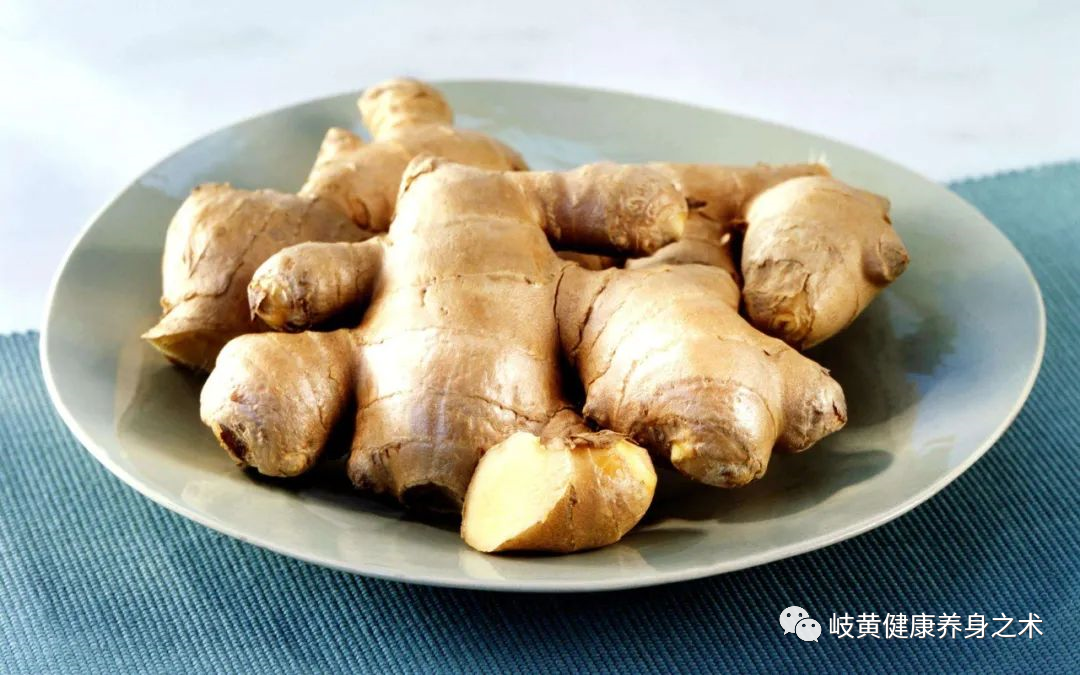 Next, we discuss fresh ginger, which is frequently used in the Shang Han Lun. The combination of fresh ginger and jujube is quite common. The later physician Tao Hongjing recorded in his Ming Yi Bie Lu: “Fresh ginger, with a spicy and slightly warm flavor, is used for cold damage, headache, nasal congestion, and cough with counterflow of qi, stopping vomiting.” Compared to dried ginger, fresh ginger has a stronger ability to release the exterior and disperse cold, suitable for wind-cold exterior conditions, while dried ginger is more effective for middle-jiao spleen and stomach deficiency with cold.Moreover, fresh ginger can also detoxify fish and crab poisons and counteract the toxicity of raw Pinellia (Ban Xia). The combination of fresh ginger and Pinellia is a classic pairing. The Jin Gui Yao Lue states: “Both Pinellia and fresh ginger juice are effective in stopping vomiting; when used together, the effect is even better; they also have the function of opening the appetite and harmonizing the middle. It is used for disharmony of stomach qi, vomiting, and restlessness.”The first formula in the Shang Han Lun, Gui Zhi Tang, is used for symptoms of headache, fever, sweating, and aversion to wind caused by external wind-cold, and it utilizes the combination of fresh ginger and jujube.Roasted Ginger (Pao Jiang)
Next, we discuss fresh ginger, which is frequently used in the Shang Han Lun. The combination of fresh ginger and jujube is quite common. The later physician Tao Hongjing recorded in his Ming Yi Bie Lu: “Fresh ginger, with a spicy and slightly warm flavor, is used for cold damage, headache, nasal congestion, and cough with counterflow of qi, stopping vomiting.” Compared to dried ginger, fresh ginger has a stronger ability to release the exterior and disperse cold, suitable for wind-cold exterior conditions, while dried ginger is more effective for middle-jiao spleen and stomach deficiency with cold.Moreover, fresh ginger can also detoxify fish and crab poisons and counteract the toxicity of raw Pinellia (Ban Xia). The combination of fresh ginger and Pinellia is a classic pairing. The Jin Gui Yao Lue states: “Both Pinellia and fresh ginger juice are effective in stopping vomiting; when used together, the effect is even better; they also have the function of opening the appetite and harmonizing the middle. It is used for disharmony of stomach qi, vomiting, and restlessness.”The first formula in the Shang Han Lun, Gui Zhi Tang, is used for symptoms of headache, fever, sweating, and aversion to wind caused by external wind-cold, and it utilizes the combination of fresh ginger and jujube.Roasted Ginger (Pao Jiang)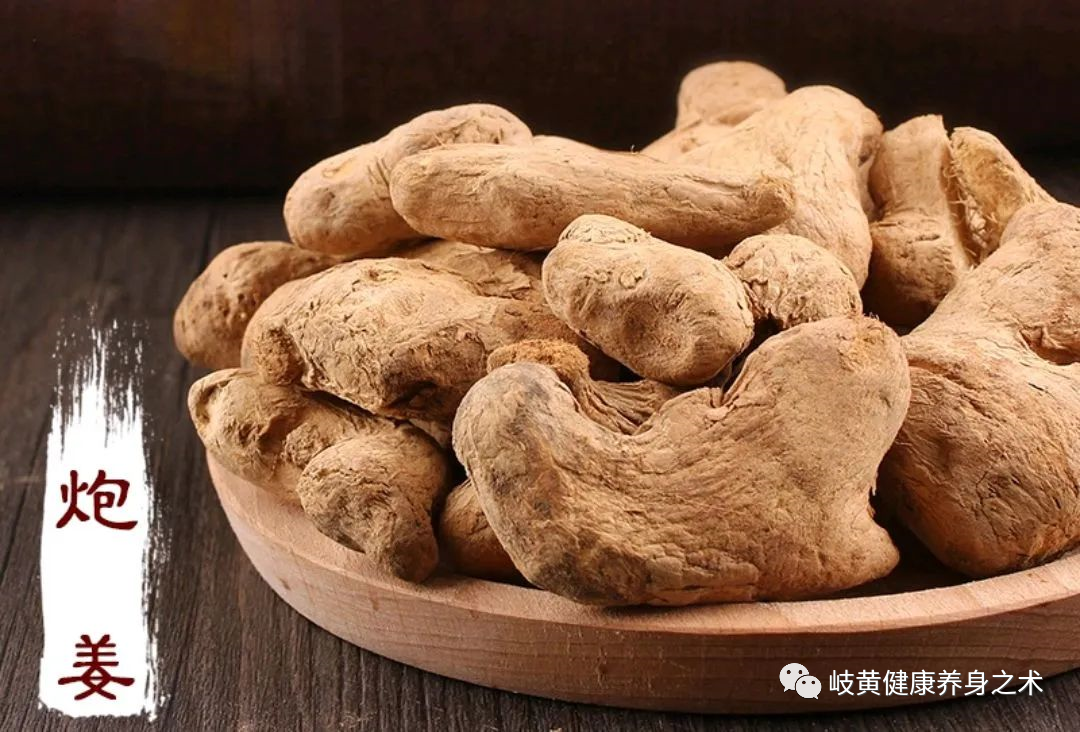 Roasted ginger is made by stir-frying dried ginger with hot sand until the surface bulges and turns brown. It is also first recorded in the Shang Han Lun, characterized by its hot nature and spicy flavor. It enters the spleen, stomach, and kidney meridians. Its effects include warming the meridians and stopping bleeding, as well as warming the middle and alleviating pain. It is mainly used for yang deficiency with blood loss, metrorrhagia, abdominal pain, and vomiting.The Jin Gui Yao Lue records the licorice and roasted ginger decoction, which actually uses roasted dried ginger, treating lung atrophy due to cold with symptoms of expectoration of foamy saliva and frequent urination; absence of cough is a key point for differential diagnosis. The original text states: “Four taels of licorice, two taels of roasted dried ginger, stir-fried, with three sheng of water, boil to obtain one sheng and five cups, strain, and take warm in two doses.” Roasted dried ginger is more effective than dried ginger in warming yang and maintaining the middle, but has a weaker dispersing power.Ginger Charcoal (Jiang Tan)
Roasted ginger is made by stir-frying dried ginger with hot sand until the surface bulges and turns brown. It is also first recorded in the Shang Han Lun, characterized by its hot nature and spicy flavor. It enters the spleen, stomach, and kidney meridians. Its effects include warming the meridians and stopping bleeding, as well as warming the middle and alleviating pain. It is mainly used for yang deficiency with blood loss, metrorrhagia, abdominal pain, and vomiting.The Jin Gui Yao Lue records the licorice and roasted ginger decoction, which actually uses roasted dried ginger, treating lung atrophy due to cold with symptoms of expectoration of foamy saliva and frequent urination; absence of cough is a key point for differential diagnosis. The original text states: “Four taels of licorice, two taels of roasted dried ginger, stir-fried, with three sheng of water, boil to obtain one sheng and five cups, strain, and take warm in two doses.” Roasted dried ginger is more effective than dried ginger in warming yang and maintaining the middle, but has a weaker dispersing power.Ginger Charcoal (Jiang Tan)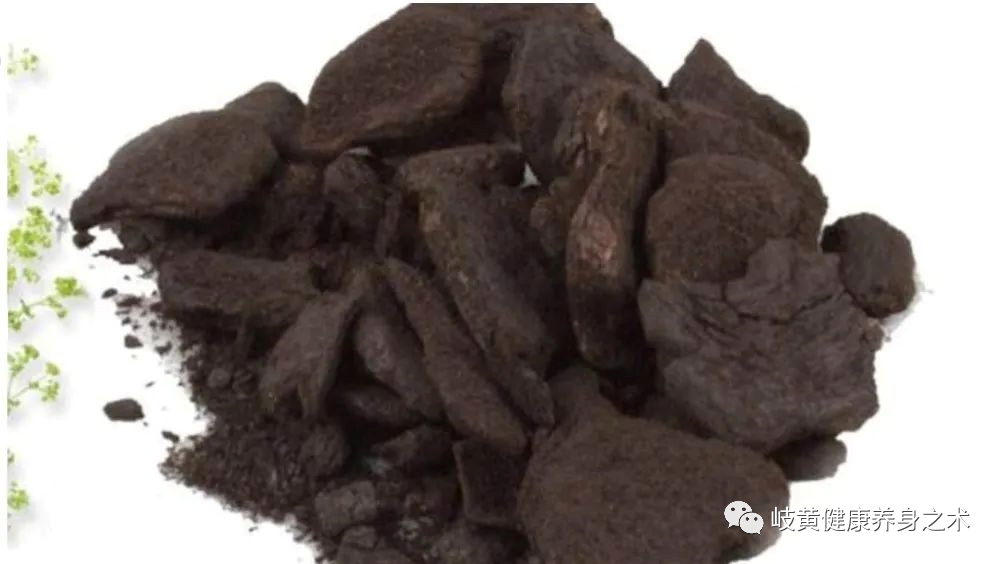 Ginger charcoal is first recorded in the Song Dynasty and is a product formed by frying ginger into charcoal. It is actually a classification of roasted ginger, but the fried charcoal ginger is more inclined to stop bleeding, as charcoal itself has a significant effect on hemostasis.Many physicians throughout history have discussed the hemostatic properties of ginger charcoal. For example, the Bencao Jing Shu states, “The reason it stops bleeding is that blood deficiency leads to heat, and heat causes erratic movement. Roasted dried ginger, when charred black, can guide various blood-tonifying herbs into the yin aspect; when blood is replenished, yin is generated, and heat retreats, preventing erratic movement of blood.”The National Standard for the Processing of Chinese Medicinal Herbs also requires that ginger charcoal be distinguished from roasted ginger: “Ginger charcoal warms the meridians and stops bleeding, primarily treating vomiting, nosebleeds, metrorrhagia, and yin deficiency with blood loss.”Galangal (Gao Liang Jiang)
Ginger charcoal is first recorded in the Song Dynasty and is a product formed by frying ginger into charcoal. It is actually a classification of roasted ginger, but the fried charcoal ginger is more inclined to stop bleeding, as charcoal itself has a significant effect on hemostasis.Many physicians throughout history have discussed the hemostatic properties of ginger charcoal. For example, the Bencao Jing Shu states, “The reason it stops bleeding is that blood deficiency leads to heat, and heat causes erratic movement. Roasted dried ginger, when charred black, can guide various blood-tonifying herbs into the yin aspect; when blood is replenished, yin is generated, and heat retreats, preventing erratic movement of blood.”The National Standard for the Processing of Chinese Medicinal Herbs also requires that ginger charcoal be distinguished from roasted ginger: “Ginger charcoal warms the meridians and stops bleeding, primarily treating vomiting, nosebleeds, metrorrhagia, and yin deficiency with blood loss.”Galangal (Gao Liang Jiang)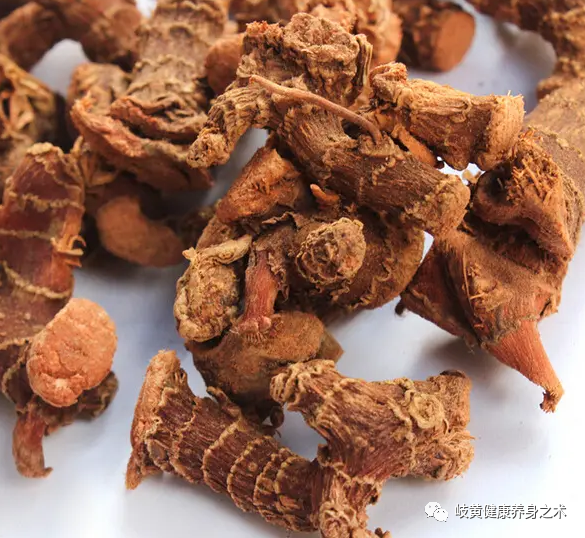 Strictly speaking, galangal is not a product of dried ginger, as it comes from the galangal plant, characterized by its hot nature and spicy flavor. Its functions include warming the stomach, dispersing cold, alleviating pain, and stopping vomiting. Galangal is first recorded in Tao Hongjing’s Ming Yi Bie Lu as a warming stomach herb. The Bie Lu states, “It is warm in nature and is used for sudden cold, cold counterflow in the stomach, and cholera abdominal pain.”In summary, fresh ginger, dried ginger, and roasted ginger gradually increase in warming effects while decreasing in dispersing cold effects. Ginger charcoal is more focused on warming the meridians and stopping bleeding, while galangal, although a close relative, has similar effects to dried ginger but emphasizes warming the interior and dispersing cold. Dried ginger is more focused on rescuing yang from counterflow, while galangal is more potent and should not be used for extended periods, thus Tao Hongjing classified galangal as a medium-grade herb, while dried ginger is classified as a superior herb.Source: From the internet, please notify for removal if there is any infringement.
Strictly speaking, galangal is not a product of dried ginger, as it comes from the galangal plant, characterized by its hot nature and spicy flavor. Its functions include warming the stomach, dispersing cold, alleviating pain, and stopping vomiting. Galangal is first recorded in Tao Hongjing’s Ming Yi Bie Lu as a warming stomach herb. The Bie Lu states, “It is warm in nature and is used for sudden cold, cold counterflow in the stomach, and cholera abdominal pain.”In summary, fresh ginger, dried ginger, and roasted ginger gradually increase in warming effects while decreasing in dispersing cold effects. Ginger charcoal is more focused on warming the meridians and stopping bleeding, while galangal, although a close relative, has similar effects to dried ginger but emphasizes warming the interior and dispersing cold. Dried ginger is more focused on rescuing yang from counterflow, while galangal is more potent and should not be used for extended periods, thus Tao Hongjing classified galangal as a medium-grade herb, while dried ginger is classified as a superior herb.Source: From the internet, please notify for removal if there is any infringement. Follow me for more great articles
Follow me for more great articles
